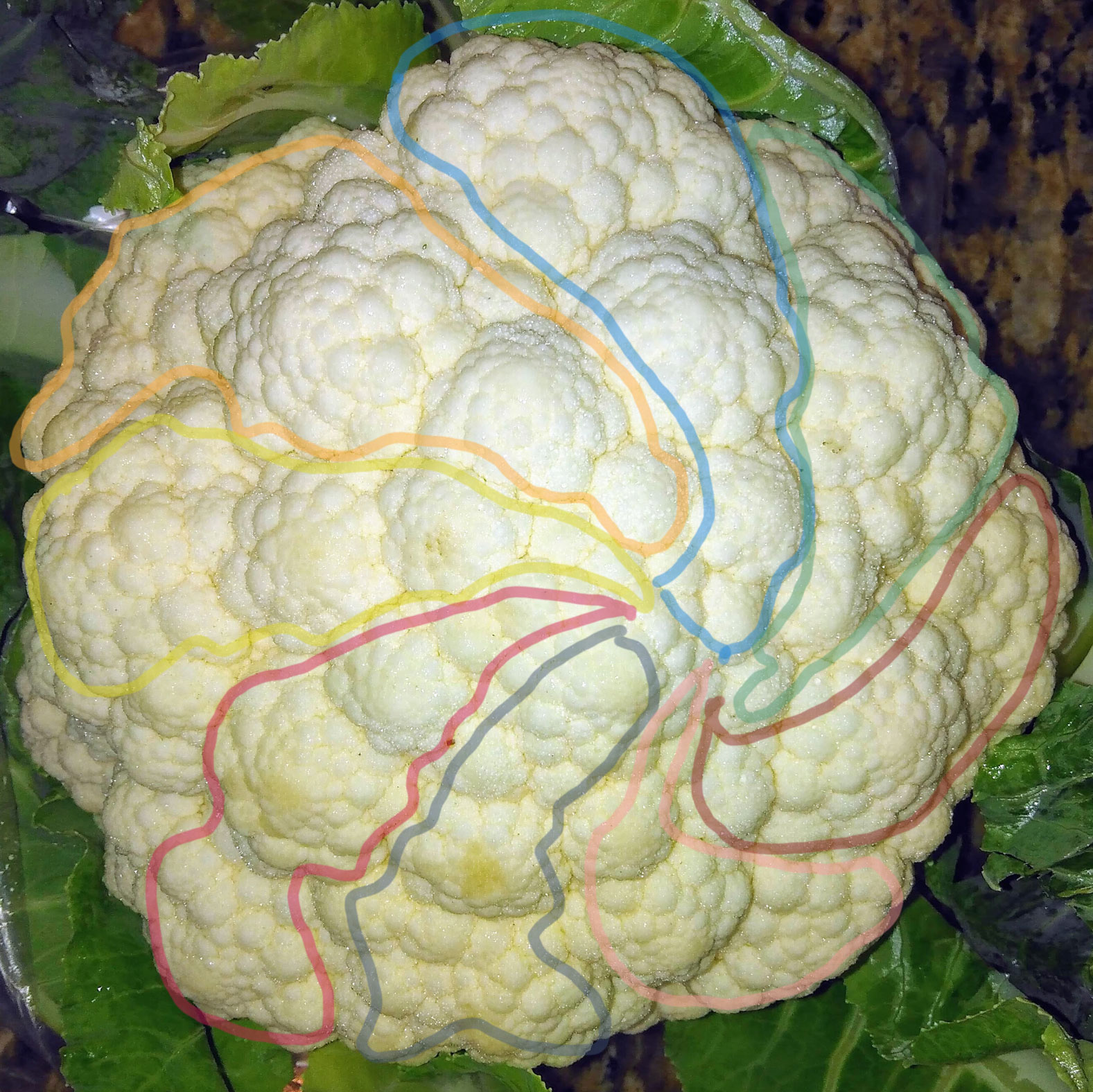Thursday, 08 July 2021
Have you ever wondered how a cauliflower grows into its strange shape? - The mystery of how this peculiar shaped vegetable forms has now been solved by a team of mathematicians and plant scientists.
Experts from the University of Nottingham worked in collaboration with and international team led by CNRS1 and Inria on the study that revealed that cauliflowers, and Romanescos in particular, are in fact buds that are designed to become flowers but which never reach their goal. The findings have been published today in Science.
The research combines mathematical modelling and plant biology to show that instead of reaching flowering stage cauliflowers develop into stems, which in turn continue trying to produce flowers. The cauliflower is born from this chain reaction, resulting in a succession of stems upon stems.
This study shows that the brief incursion of buds into a flowering state profoundly affects their functioning and allows them, unlike normal stems, to grow without leaves and to multiply almost infinitely. The atypical shape of the Romanesco is explained by the fact that its stems produce buds more and more rapidly (whereas the production rate is constant in other cauliflowers). This acceleration gives each floret a pyramidal appearance, making the fractal aspect of the structure clear. The study highlights how the selection of mutations in plants during the process of domestication has changed their shape, sometimes drastically, into the fruits and vegetables on our shelves.
After over a decade of collaborative work from a multidisciplinary and international team of researchers, this emergent process can finally be explained. Although most plants present a geometric organisation in spirals along main and secondary axes (called "phyllotaxis"), cauliflowers present an unusual phyllotaxis with a multitude of spirals, nested over a wide range of scales. How such a fractal self-similar organization emerges from developmental mechanisms has, until now, remained elusive.
Combining experimental analyses in Arabidopsis thaliana cauliflower-like mutant with mathematical modelling, we found that curd self-similarity arises because growing plant tissues fail to form flowers but keep the “memory” of their transient passage in a floral state. Understanding this genetic mutation could help plant scientists optimise growth of related plants.

Story credits
More information is available from Etienne Farcot on Etienne.farcot@nottingham.ac.uk or Jane Icke, Media Relations Manager for the Faculty of Science at the University of Nottingham, on jane.icke@nottingham.ac.uk
Notes to editors:
About the University of Nottingham
Ranked 97 in the world and 17th in the UK by the QS World University Rankings, the University of Nottingham is a founding member of Russell Group of research-intensive universities. Studying at the University of Nottingham is a life-changing experience, and we pride ourselves on unlocking the potential of our students. We have a pioneering spirit, expressed in the vision of our founder Sir Jesse Boot, which has seen us lead the way in establishing campuses in China and Malaysia - part of a globally connected network of education, research and industrial engagement.
Nottingham was crowned Sports University of the Year by The Times and Sunday Times Good University Guide 2024 – the third time it has been given the honour since 2018 – and by the Daily Mail University Guide 2024.
The university is among the best universities in the UK for the strength of our research, positioned seventh for research power in the UK according to REF 2021. The birthplace of discoveries such as MRI and ibuprofen, our innovations transform lives and tackle global problems such as sustainable food supplies, ending modern slavery, developing greener transport, and reducing reliance on fossil fuels.
The university is a major employer and industry partner - locally and globally - and our graduates are the third most targeted by the UK's top employers, according to The Graduate Market in 2024 report by High Fliers Research.
We lead the Universities for Nottingham initiative, in partnership with Nottingham Trent University, a pioneering collaboration between the city’s two world-class institutions to improve levels of prosperity, opportunity, sustainability, health and wellbeing for residents in the city and region we are proud to call home.
More news…